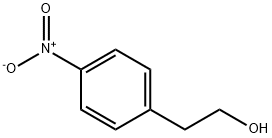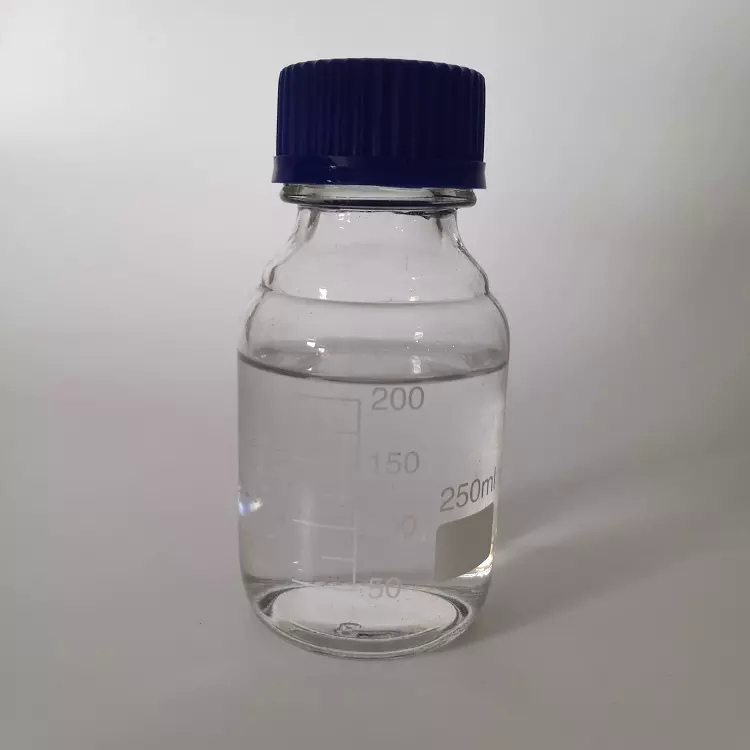Phenethyl alcohol
Synonym(s):PEA;2-Phenylethanol;2-Phenylethyl alcohol;Benzyl carbinol;β-PEA
- CAS NO.:60-12-8
- Empirical Formula: C8H10O
- Molecular Weight: 122.16
- MDL number: MFCD00002886
- EINECS: 200-456-2
- SAFETY DATA SHEET (SDS)
- Update Date: 2025-12-26 16:58:18

What is Phenethyl alcohol?
Chemical properties
Phenethyl alcohol is the main component of rose oils obtained from rose blossoms. It occurs in smaller quantities in neroli oil, ylang-ylang oil, carnation oil, and geranium oils. Since the alcohol is rather soluble in water, losses occur when essential oils are produced by steam distillation.
Phenylethyl alcohol is a colorless liquid with a mild rose odor. It can be dehydrogenated catalytically to phenylacetaldehyde and oxidized to phenylacetic acid (e.g.,with chromic acid). Its fatty acid esterswith lowermolecularmass, as well as some alkyl ethers, are valuable fragrance and flavor substances.
Chemical properties
Phenethyl alcohol has a characteristic rose-like odor and an initially slightly bitter taste, then sweet and reminiscent of peach.
Occurrence
Reported found (as is or esterified) in several natural products: rose concentrate, rose absolute (60% or more) and rose distillation waters; also found in the essential oils of neroli, ylang-ylang, narcissus, hyacinth, lily, tea leaves, Michelia champaca, Pandamus odoratissimus, Congo and Réunion geranium, tobacco and other oils. It has been identified in wines. It has also been reported found in over 200 foods and beverages including apple, apricot, orange juice, orange peel, many berries, bilberry, cherry, grapefruit, peach, raisin, blackberry, guava, grapes, melon, papaya, asparagus, cabbage, leek, potato, rutabaga, tomato, Mentha oils, cinnamon, ginger, breads, butter, saffron, mustard, mango, many cheeses, butter, milk, cooked chicken, cognac, hop oil, beer, rum, whiskies, cider, sherry, cocoa, coffee, tea, nuts, oats, honey, soybean, coconut meat, avocado, olive, passion fruit, plum, beans, mushroom, starfruit, mango, tamarind, fruit brandies, fig, gin, rice, quince, radish, litchi, sukiyaki, calamus, licorice, buckwheat, watercress, elderberry fruit, kiwifruit, loquat, Tahiti and Bourbon vanilla, mountain papaya, endive, lemon balm, clary sage, shrimps, crab, Chinese quince, lamb’s lettuce, truffle and maté.
The Uses of Phenethyl alcohol
phenethyl alcohol is used to mask odor and also as a preservative.
The Uses of Phenethyl alcohol
Pharmaceutic aid (antimicrobial). In flavors and perfumery (esp rose perfumes).
The Uses of Phenethyl alcohol
In fragrance; antimicrobial agent; in organic synthesis; preservative, food additive
What are the applications of Application
2-Phenylethanol is an alcohol potentially used as an anti-microbial
Production Methods
Phenylethyl alcohol is prepared by reduction of ethyl phenylacetate with sodium in absolute alcohol; by hydrogenation of phenylacetaldehyde in the presence of a nickel catalyst; or by addition of ethylene oxide or ethylene chlorohydrin to phenylmagnesium bromide, followed by hydrolysis. Phenylethyl alcohol also occurs naturally in a number of essential oils, especially rose oil.
Preparation
From toluene, benzene or styrene.
Definition
ChEBI: 2-phenylethanol is a primary alcohol that is ethanol substituted by a phenyl group at position 2. It has a role as a fragrance, a Saccharomyces cerevisiae metabolite, a plant metabolite, an Aspergillus metabolite and a plant growth retardant. It is a primary alcohol and a member of benzenes.
Aroma threshold values
Detection: 0.015 ppb to 3.5 ppm; recognition: 1.2 ppm. Aroma characteristics at 1.0%: floral honey, yeasty bready, musty fresh and sweet.
Taste threshold values
Taste characteristics at 20 ppm: mushroom-like, rose floral, sweet, rosy, bready with honey nuances.
Synthesis Reference(s)
Chemistry Letters, 18, p. 619, 1989
Journal of the American Chemical Society, 100, p. 4888, 1978 DOI: 10.1021/ja00483a042
Tetrahedron Letters, 18, p. 3263, 1977 DOI: 10.1016/S0040-4039(01)83213-5
General Description
Phenylethyl alcohol, is a primary aromatic alcohol of high boiling point, having a characteristic rose-like odor. It presents organoleptic properties and impacts the quality of the wine, distilled beverages, and fermented foods. It shows its presence in fresh beer and is responsible for the rose-like odor of well-ripened cheese. It is commercially and industrially an important flavor and is a component of a variety of foodstuffs such as ice cream, gelatin, candy, pudding, chewing gum, and non-alcoholic beverages. It is formed by yeasts during fermentation of alcohols either by decomposition of L-phenylalanine or metabolism of sugar substrates.
Pharmaceutical secondary standards for application in quality control, provide pharma laboratories and manufacturers with a convenient and cost-effective alternative to the preparation of in-house working standards.
Health Hazard
Phenylethanol is an irritant of the eyes and a teratogen in rats.
Pharmaceutical Applications
Phenylethyl alcohol is used as an antimicrobial preservative in nasal, ophthalmic, and otic formulations at 0.25–0.5% v/v concentration; it is generally used in combination with other preservatives.Phenylethyl alcohol has also been used on its own as an antimicrobial preservative at concentrations up to 1% v/v in topical preparations. At this concentration, mycoplasmas are inactivated within 20 minutes, although enveloped viruses are resistant.Phenylethyl alcohol is also used in flavors and as a perfumery component, especially in rose perfumes.
Safety Profile
Moderately toxic by ingestion and skin contact. A skin and eye irritant. Experimental teratogenic effects. Other experimental reproductive effects. Causes severe central nervous system injury to experimental animals. Mutation data reported. Combustible when exposed to heat or flame; can react with oxidzing materials. To fight fEe, use CO2, dry chemical. When heated to decomposition it emits acrid smoke and irritating fumes
Safety
Phenylethyl alcohol is generally regarded as a nontoxic and
nonirritant material. However, at the concentration used to preserve
eye-drops (about 0.5% v/v) or above, eye irritation may occur.
LD50 (rabbit, skin): 0.79 g/kg
LD50 (rat, oral): 1.79 g/kg
Carcinogenicity
Phenylethanol was not mutagenic in bacterial assays, nor did it increase the number of sister chromatid exchanges in human lymphocytes.
Metabolism
Phenylethyl alcohol is oxidized almost entirely to the corresponding acid (Williams. 1959).
Storage
Phenylethyl alcohol is stable in bulk, but is volatile and sensitive to
light and oxidizing agents. It is reasonably stable in both acidic and
alkaline solutions. Aqueous solutions may be sterilized by
autoclaving. If stored in low-density polyethylene containers,
phenylethyl alcohol may be absorbed by the containers. Losses to
polypropylene containers have been reported to be insignificant
over 12 weeks at 30°C. Sorption to rubber closures is generally
small.
The bulk material should be stored in a well-closed container,
protected from light, in a cool, dry place.
Purification Methods
Purify the ethanol by shaking it with a solution of ferrous sulfate, and the alcohol layer is washed with distilled water and fractionally distilled. [Beilstein 6 IV 3067.]
Incompatibilities
Incompatible with oxidizing agents and protein, e.g. serum. Phenylethyl alcohol is partially inactivated by polysorbates, although this is not as great as the reduction in antimicrobial activity that occurs with parabens and polysorbates.
Regulatory Status
Included in the FDA Inactive Ingredients Database (nasal, ophthalmic, and otic preparations). Included in nonparenteral medicines licensed in the UK. Included in the Canadian List of Acceptable Non-medicinal Ingredients.
Properties of Phenethyl alcohol
| Melting point: | -27 °C (lit.) |
| Boiling point: | 219-221 °C/750 mmHg (lit.) |
| Density | 1.020 g/mL at 20 °C (lit.) |
| vapor density | 4.21 (vs air) |
| vapor pressure | 1 mm Hg ( 58 °C) |
| refractive index | n |
| FEMA | 2858 | PHENETHYL ALCOHOL |
| Flash point: | 216 °F |
| storage temp. | Store below +30°C. |
| solubility | Miscible with chloroform. |
| form | Liquid |
| pka | 15.17±0.10(Predicted) |
| color | Clear colorless |
| Odor | floral odor of roses |
| PH | 6-7 (20g/l, H2O, 20℃) |
| explosive limit | 1.4-11.9%(V) |
| Water Solubility | 20 g/L (20 ºC) |
| Merck | 14,7224 |
| JECFA Number | 987 |
| BRN | 1905732 |
| Dielectric constant | 13.0(20℃) |
| Stability: | Stable. Substances to be avoided include strong acids and strong oxidizing agents. Combustible. |
| CAS DataBase Reference | 60-12-8(CAS DataBase Reference) |
| NIST Chemistry Reference | Benzeneethanol(60-12-8) |
| EPA Substance Registry System | Benzeneethanol (60-12-8) |
Safety information for Phenethyl alcohol
| Signal word | Warning |
| Pictogram(s) |
 Exclamation Mark Irritant GHS07 |
| GHS Hazard Statements |
H302:Acute toxicity,oral H319:Serious eye damage/eye irritation |
| Precautionary Statement Codes |
P264:Wash hands thoroughly after handling. P264:Wash skin thouroughly after handling. P270:Do not eat, drink or smoke when using this product. P280:Wear protective gloves/protective clothing/eye protection/face protection. P301+P312:IF SWALLOWED: call a POISON CENTER or doctor/physician IF you feel unwell. P305+P351+P338:IF IN EYES: Rinse cautiously with water for several minutes. Remove contact lenses, if present and easy to do. Continuerinsing. P337+P313:IF eye irritation persists: Get medical advice/attention. |
Computed Descriptors for Phenethyl alcohol
| InChIKey | WRMNZCZEMHIOCP-UHFFFAOYSA-N |
Phenethyl alcohol manufacturer
Prakash Chemicals International Private Limited
M. P. Aromas
New Products
4,4-Difluoropiperidine hydrochloride tert-butyl 9-methoxy-3-azaspiro[5.5]undecane-3-carboxylate Indole Methyl Resin N-Isopropylurea N,N-Dicyclohexylcarbodiimide(DCC) MELDRUMS ACID 5-METHYLISOXAZOLE-4-CARBOXYLIC ACID Magnessium Bis glycinate Zinc ascorbate 1-bromo-2-butyne 2-acetamidophenol 9(10H)-anthracenone Erythrosin B, 4-Piperidinopiperidine 2-((4-morpholinophenylamino) (methylthio) methylene) malononitrile 2,4-dihydroxybenzaldehyde 3-(4-morpholinophenylamino)-5-amino-1H-pyrazole-4-carbonitrile Methyl 2-methylquinoline-6-carboxylate 2,6-dichloro-4-nitropyridine 4-Bromo-2-chlorobenzonitrile 2-(benzylamino)acetic acid hydrochloride 4-(tert-Butoxycarbonylamino)but- 2-ynoic acid 3,4-dihydro-2H-benzo[b][1,4]dioxepine 1-Phenyl-1-cycloprppanecarboxylicacidRelated products of tetrahydrofuran








You may like
-
 1960-12-8 Phenyl Ethyl Alcohol 98%View Details
1960-12-8 Phenyl Ethyl Alcohol 98%View Details
1960-12-8 -
 2-Phenylethanol CAS 60-12-8View Details
2-Phenylethanol CAS 60-12-8View Details
60-12-8 -
 Phenylethyl alcohol CAS 60-12-8View Details
Phenylethyl alcohol CAS 60-12-8View Details
60-12-8 -
 Phenylethyl alcohol, puriss CAS 60-12-8View Details
Phenylethyl alcohol, puriss CAS 60-12-8View Details
60-12-8 -
 Phenethyl alcohol CAS 60-12-8View Details
Phenethyl alcohol CAS 60-12-8View Details
60-12-8 -
 Phenyl Ethyl Alcohol (C8H10O), 200 litres Drum, 99%View Details
Phenyl Ethyl Alcohol (C8H10O), 200 litres Drum, 99%View Details
60-12-8 -
 Phenylethyl Alcohol CAS Number: 60-12-8View Details
Phenylethyl Alcohol CAS Number: 60-12-8View Details
60-12-8 -
 Phenyl Ethyl Alcohol (PEA) (60-12-8), >99% Purity, 200 Kg Drum For Cosmetics IndustryView Details
Phenyl Ethyl Alcohol (PEA) (60-12-8), >99% Purity, 200 Kg Drum For Cosmetics IndustryView Details
60-12-8
